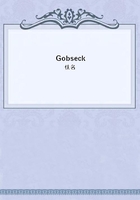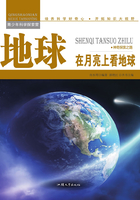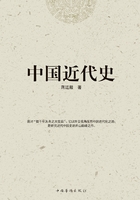Though Browne, like his masters Cromwell and Cranmer, was inclined to push forward rapidly with his radical schemes of reform, yet, well aware of the state of feeling in Dublin and throughout the country, he feared to give offence by proceeding at once to extremes. At first he contented himself with issuing the "bedes" or a form of prayer for the king as supreme head of the church, for Prince Edward, for the Deputy, council, and nobles, and for the faithful departed. Encouraged, however, by the wholesale attack on images and pilgrimage shrines begun in England (1538), he determined to undertake a similar work in Ireland in the same year. But such a work proved to be so distasteful to the people that he was obliged to deny that he had any intention of pulling down the image of Our Lady of Trim or the Holy Cross in Tipperary, though in his letter to Cromwell he admitted that "his conscience would right well serve him to oppress such idols."[25] In August of the same year Lord Butler reported to Cromwell that the vicar of Chester announced in the presence of the Deputy, the archbishop, and several members of the council that the king had commanded that images should be set up again and worshipped as before, whereupon the Deputy remained silent, but some of the others answered, that if the vicar were not protected by the presence of the Deputy they "would put him fast by the heels," as he deserved grievous punishment.[26] In October Lord Grey, the Archbishop of Dublin, and others attended the sessions at Trim for the trial of a bishop and of a Franciscan friar, and, to the no small indignation of the archbishop, Lord Grey visited the shrine of Our Lady of Trim to pray before the image.[27] The encouragement given to Browne and his friends by Cromwell's instructions (Dec. 1538) strengthened them to continue their campaign "for the plucking down of idols and the extinguishing of idolatry." The shrine of Our Lady at Trim was destroyed; the Staff of Jesus was burned publicly; the Cross of Ballybogan was broken, and a special commission was established to search for and to destroy images, pictures, and relics.[28] Even the Deputy, who was accused of favouring idols and papistry, had already despoiled the Cathedral of Down, the monastery of Killeigh and the collegiate church of Galway, though in all probability this action was taken not so much out of contempt for the practices of the Church as with the hope of raising money to pay his troops, and of securing the favour of the king.
In England Henry VIII. had turned his attention almost immediately after the separation from Rome to the suppression of the monasteries and religious houses. This step was undertaken by him, partly because the religious orders were the strongest and most energetic supporters of the Pope, and partly, also, because he wished to enrich the royal treasury by the plunder of the goods and possessions of the monasteries. In England, however, some form of justice was observed;but in Ireland no commission was appointed to report on the condition of the monasteries or convents, and no opportunity was given them to defend themselves against the slanderous statements of officials, who were thirsting to get possession of their lands and their revenues.
According to the estimate given by De Burgo, there were in Ireland at the time of Henry VIII. two hundred and thirty-one houses of the Canons Regular of St. Augustine, thirty-six houses belonging to the Premonstratensians, twenty-two of the Knights of St. John, fourteen to the Trinitarians or Crouched Friars, nine to the Benedictines, forty-two to the Cistercians, forty-three to the Dominicans, sixty-five to the Franciscans, twenty-six to the Hermits of St. Augustine, twenty-five to the Carmelites, and forty-three belonging to various communities of Nuns.[29] Though in many particulars this summary is far from being accurate, it may be taken as giving a fairly correct idea of the number of religious houses at the period. Many of these institutions were possessed of immense wealth, derived for the most part from lands and church patronage. According to a return drawn up in 1536 the annual revenue of the religious houses in Meath was set down at ā900 Irish money, in Dublin at ā900, in Louth at ā600, and in Kildare at ā255. If steps were taken to suppress immediately the houses within these four shires it was reckoned that the king might secure an annual revenue of ā3,000, but if the communities concerned got warning of the danger it was thought that the king would lose ā1,000 of this.[30]
By Henry's orders steps were taken in 1536 to secure the approval of Parliament for the suppression of the monasteries, but though the Abbey of St. Wolstan near Leixlip, belonging to the Canons Regular of St. Victor was suppressed, both the spiritual and the lay peers together with the proctors of the clergy offered a strenuous opposition to the attack on the religious establishments. They knew better than the English officials the work that was being done by many of these institutions for religion, education, and hospitality, as well as for the comfort of the poor and the infirm. In October 1537, however, an act was passed for the suppression of Bective, St. Peter's beside Trime, Duisk, Duleek, Holmpatrick, Baltinglass, Taghmolin, Dunbrody, Tintern, and Ballybogan. Their lands, houses and possessions generally were to be vested in the king, and a pension was to be secured to the abbots and priors.[31] Together with these, eight abbies mentioned in a special commission under the great seal were suppressed.[32]















